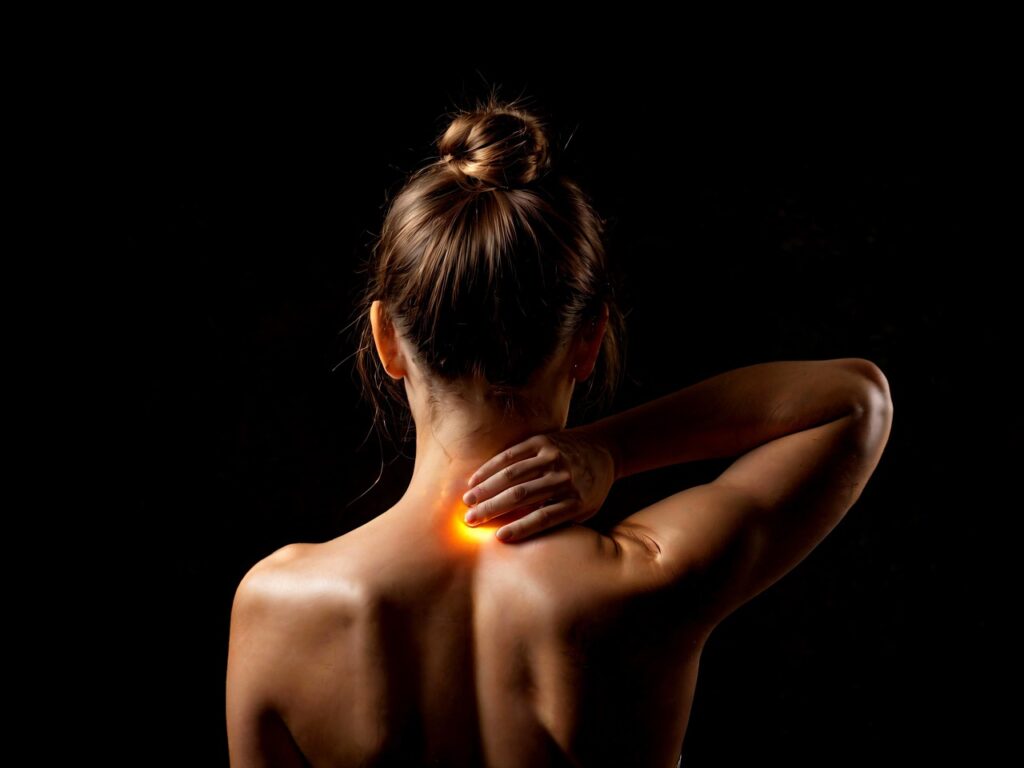Eight hours at a keyboard can twist the human body into a question mark, leaving shoulders tight, wrists throbbing, and hips as stiff as frozen pizza dough. Registered massage therapists (RMTs) know that a few clever self-moves can loosen those knots before they become sick-day excuses.
The first hot spot sits where the skull meets the neck, a ridge that acts like a clothesline for stress. Slide both hands up the back of the head until the thumbs drop into two hollows below the bone. Press inward and lift slightly, holding steady while breathing for five slow counts. Blood flow rushes in, feeding oxygen to tired eyes and rebooting focus like a quick nap would, minus the boss catching you snoozing.
“Thumb pressure under the skull flips ache into alertness in under a minute.”
Shoulder blades crave relief next, especially when they’ve acted as wing-shaped coasters for backpack straps and tension. Place a tennis ball between the right shoulder blade and the chair back, then lean until the ball pins a tender point. Tiny side-to-side sways—think windshield wipers in drizzle—break up sticky fascia and remind muscles they are elastic, not cement. Thirty seconds per side often melts the burning line from spine to shoulder tip, making posture feel natural instead of forced.
Endless typing pulls forearm flexors tight enough to pluck like guitar strings. Rest the left forearm on the desk, palm down, and use the right thumb to draw slow circles from the elbow to the wrist along the meaty edge. When a knot jumps under the skin, pause and press for two breaths, then continue the glide. Fresh blood flushes out metabolic waste—tiny chemical leftovers that spark irritation, leaving fingers lighter for the subsequent avalanche of emails.
Hours of sitting also shorten the hip crease, turning simple standing into a creaky chore. While seated, make a fist and nestle the knuckles into the spot where the thigh meets the abdomen. Lean forward just enough to load body weight onto that fist, holding pressure as you count to ten. The deep hip flexor, called the psoas, reluctantly releases, allowing the pelvis to tip back into healthy alignment so the lower back can stop acting like a shock absorber for bad posture.
“Circling the forearm frees the very muscles that power every keystroke.”
Finally, cramped feet deliver complaints up the chain. Kick off shoes, slip a chilled water bottle under the arch, and roll from heel to toe like painting a stripe. Cold plus compression shrinks swelling and wakes the small muscles that support ankle balance. When those foot muscles fire correctly, knees and hips track better, sparing you from the domino effect of desk-bound stiffness.
None of these moves require gym clothes, privacy, or more gear than what fits in a lunch bag, yet together they form a mini routine that keeps circulation humming and joints moving the way biology intended. Set a quiet phone alarm every two hours, stand up, run through the sequence, and return to work feeling like someone hit the body’s reset button. The day’s tasks may still pile up, but pain doesn’t have to pile on with them.
“Frequent micro-sessions of self-massage turn long desk days from draining to doable.”

